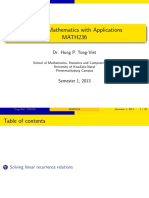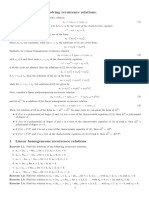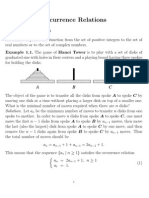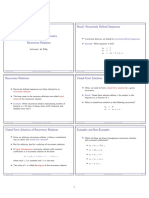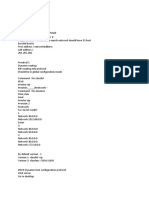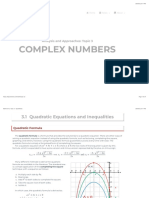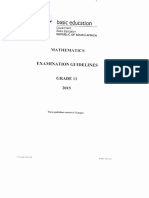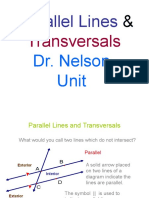0% found this document useful (0 votes)
213 views35 pagesLecture 10
This document provides information about linear homogeneous recurrence relations with constant coefficients. It defines what a linear homogeneous recurrence relation is and gives examples. It explains that the solutions to these recurrence relations can be found by:
1) Finding the characteristic equation and roots
2) Noting that any linear combination of solutions is also a solution
3) The solutions will be in the form of the characteristic roots raised to successive powers
It provides theorems for finding the solutions based on whether the characteristic roots are distinct or not. Examples are worked through to demonstrate solving recurrence relations using the theorems.
Uploaded by
PradiptoCopyright
© © All Rights Reserved
We take content rights seriously. If you suspect this is your content, claim it here.
Available Formats
Download as PDF, TXT or read online on Scribd
0% found this document useful (0 votes)
213 views35 pagesLecture 10
This document provides information about linear homogeneous recurrence relations with constant coefficients. It defines what a linear homogeneous recurrence relation is and gives examples. It explains that the solutions to these recurrence relations can be found by:
1) Finding the characteristic equation and roots
2) Noting that any linear combination of solutions is also a solution
3) The solutions will be in the form of the characteristic roots raised to successive powers
It provides theorems for finding the solutions based on whether the characteristic roots are distinct or not. Examples are worked through to demonstrate solving recurrence relations using the theorems.
Uploaded by
PradiptoCopyright
© © All Rights Reserved
We take content rights seriously. If you suspect this is your content, claim it here.
Available Formats
Download as PDF, TXT or read online on Scribd
/ 35












